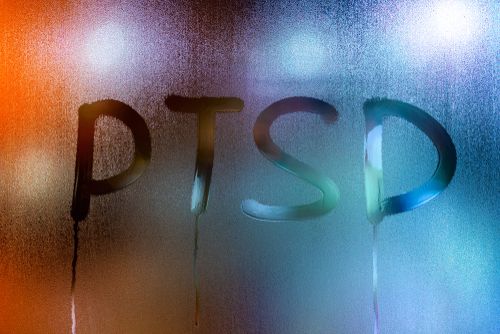 In 2010, the United States Senate established PSTD Awareness Day as a tribute to a North Dakota National Guardsman who took his life after his second tour of duty in Iraq. June 27 is #NationalPTSDAwarenessDay in honor of his birthday. It’s estimated that only about 3.5% of the population suffers from this condition. Although that number seems small, consider that about eight million people live with it. Understanding PTSD and raising awareness of its effects can help your friends and family get help to recover.
In 2010, the United States Senate established PSTD Awareness Day as a tribute to a North Dakota National Guardsman who took his life after his second tour of duty in Iraq. June 27 is #NationalPTSDAwarenessDay in honor of his birthday. It’s estimated that only about 3.5% of the population suffers from this condition. Although that number seems small, consider that about eight million people live with it. Understanding PTSD and raising awareness of its effects can help your friends and family get help to recover.
History of PTSD
PTSD stands for post-traumatic stress disorder. It’s often associated with soldiers who experience trauma in battle. Hippocrates identified the symptoms in a poem from 50 BC, so the condition is nothing new. Shakespeare wrote about PTSD in “Henry IV,” almost 400 years before the condition was formally introduced. It’s been referred to as shell shock, battle fatigue and railway spine.
In World War I, PTSD was treated with electric shock therapy. Fortunately, researchers have worked hard to understand the disorder and its effects. Modern treatment revolves around therapy, both individual and group, and medications to manage the symptoms. Today, the condition is treatable. Unfortunately, many people who deal with it don’t seek treatment. There is a stigma about PTSD, and people who suffer from it are stereotyped as dangerous or unpredictable. The person with PTSD may feel weak or damaged, and it can cause people to become isolated because they don’t believe they can share their pain. Service members who live with PTSD often fear being seen as unfit for duty. They worry about discharge from the service because they can’t be trusted to protect others. People who have PTSD because of past trauma not related to military service often get told “just get over it.”
PTSD Happened to You, But You Can Do Something About It
PTSD is a mental health problem that some people suffer from after experiencing or wittnessing a traumatic event. Anyone can develop the condition, regardless of age or gender. You don’t even have to directly experience the trauma. First responders often witness other people face traumatic events, which can cause the first responder to experience PTSD.
The signs are often stereotyped, so if you believe someone is dealing with PTSD, it’s best left to a mental health professional to diagnose the disorder.
- Trouble sleeping
- Reliving memories, flashbacks or intrusive thoughts
- Avoidance of feelings, people, places or situations
- Feelings of hypervigilance and reactivity
Interestingly, almost 90% of Americans are exposed to a traumatic event at some point in their life, but only about 10% of those people develop PTSD. Women are more likely to be diagnosed than men, but some believe that this is due to women seeking treatment more often than men. If you experience a traumatic event, such as a car accident, school shooting or assault, seeking treatment with a mental health professional after the experience can help prevent the condition from becoming an issue.
Getting Help
The VA has an extensive section on its website dedicated to PTSD awareness, treatment and support designed for veterans and their loved ones. It’s part of the military’s commitment to proactively treating mental health disorders for those who served. The National Alliance on Mental Illness has help for both military and civilians dealing with PTSD. The National Suicide Prevention Hotline at 1-800-273-8255 is a resource for people in crisis. You can also call 911 or go to your local emergency room for immediate help with symptoms when you need assistance right away.
Don’t let loved ones suffer from PTSD, anxiety or depression. Help is available. Let’s raise awareness of PTSD this year to encourage our friends and family to seek treatment so they can enjoy living.



